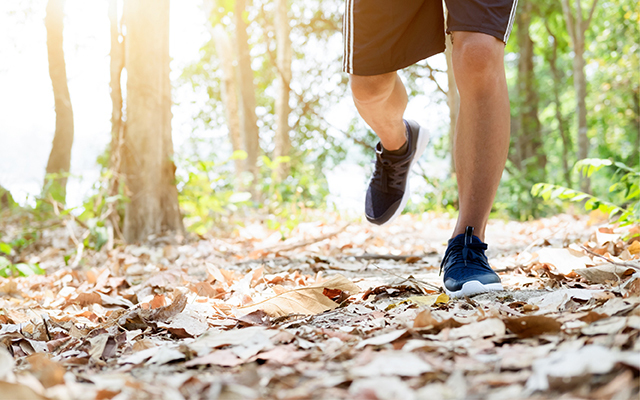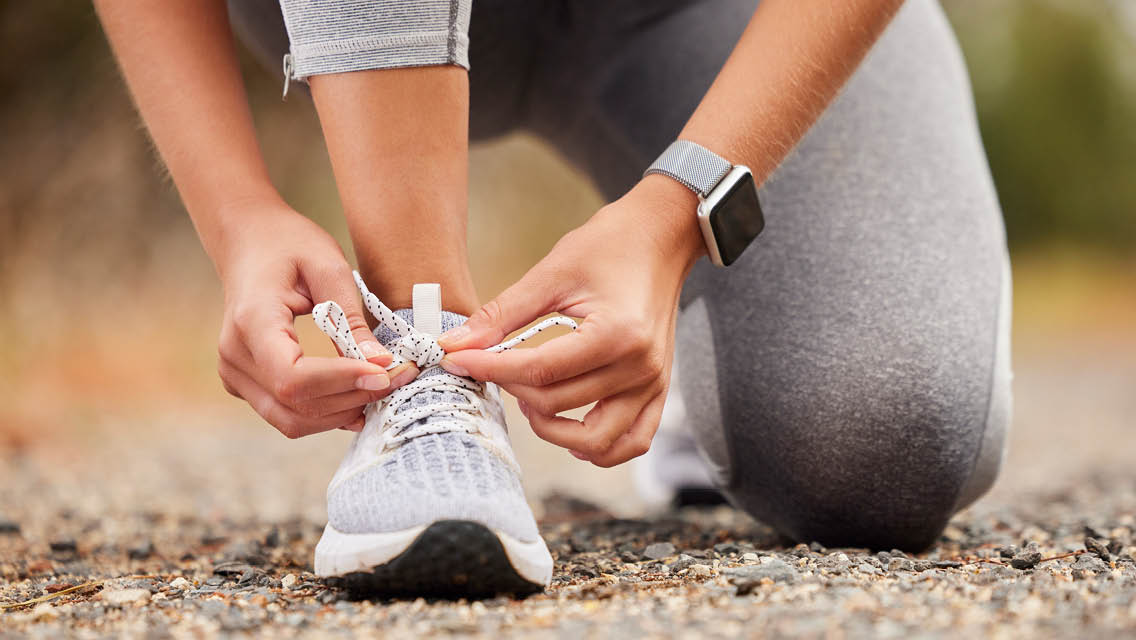How do you run? This isn’t a question of how far or how fast, of what type of training and racing you do, or of where and when you run. This question is about the physical act of running. How do you look compared with other runners? Is your running form efficient or wasteful, safe or risky?
Most runners don’t know the answer to those questions because they never clearly see themselves in action. At most, they catch fleeting, fuzzy glimpses reflected in store windows, or they see still photos taken late in races. Few runners ever use a video to analyze their form or, better yet, submit to an expert’s critique.
Regardless of how you go about it, honing your running form is important. A stride that’s both healthy and economical not only ensures more fruitful workouts, it also may correct bad habits that, if left unchecked, can lead to pain or injury.
Take a Step Back
Before putting yourself under the microscope, you need to know a few facts about form:
- Form is deeply ingrained. You probably first learned how to run at age 2, so it’s unlikely that any assessment will dramatically alter what decades of practice have taught you. But you can smooth some rough edges.
- Form is as individual as a fingerprint. While you might not know how you look while running, you can usually identify runner friends from a distance. Think about a runner a quarter-mile away, backlit by the sun. Long before you see a face, you know who it is by how he or she moves. If there were one “right” way to run, everyone would run alike.
- Form follows function. Erase most of your mental pictures of athletes in action. Runners seen on television usually are sprinting or nearly so. They run on their toes, with powerful arm action, long strides, high knee lift and back kick. This is the exact opposite of how you run at half that pace or less. The slower you go, the less you resemble a sprinter
- Form isn’t everything. One of the greatest Olympians of the 20th century, Emil Zatopek, wasn’t pretty to watch. His head lolled and his face grimaced, but he got where he was going faster than anyone else in his era. When it comes to competition, form isn’t always the top priority. But by warding off injury, good form can improve your longevity as a competitive runner.
Running Form Cues
Stripped to its core, the act of running adds up to little more than a series of collisions between your feet and the ground. These mini-collisions prevent you from falling on your face after you’ve launched yourself into the air. Each foot returns to earth 500 to 700 times per mile.
While running, you land with a force about triple your body weight (even greater going downhill). The stresses on your feet and legs add up enormously over the miles and days. This doesn’t mean that running, by its nature, should wear you down. The body is built to run, with the joints acting as shock absorbers to ease the constant pounding.
Your choice of shoes and surface can moderate impact, and training helps you to better adapt. But attention to form helps, too. Sloppy strides cause unnecessary jarring and can increase the risk of injuries that result from repetitive stress. Smooth, quiet, economical, balanced running can minimize or eliminate the damage.
To better understand what good running form is, first notice what it is not. Even before analyzing your own mannerisms, you can often see – and sometimes hear – the flaws in other runners. Here are five of the most common (and correctable) running mistakes to watch for:
1. Slapping. This is the sound of feet meeting the ground too forcefully. It happens for two reasons: overstriding, which is landing too far back on the heel as a result of reaching out too far with the lead foot; and landing with a locked knee, rigid ankle or both. The “slap” is the sound of shock inadequately absorbed.
How to correct it: Keep the foot under the knee on touchdown, and the knee slightly flexed (flex more while running downhill where impact force is greater). Use the flexing ankle first to cushion the blow, then to toe-off quickly. Picture yourself gliding over the ground rather than stomping on it.
2. Hunching. Runners, especially newer ones, move as if afraid of falling. They look down at their feet and watch every step. This creates poor posture – running in the shape of a “C” with the head and shoulders thrust forward and the buttocks sticking out. Running this way throws extra force onto the lower body and constricts breathing.
How to correct it: Straighten up. Run like an inverted exclamation point with the dot as your head. Run tall, in line from head to toe, gazing ahead at the horizon.
3. Flapping. The hands and arms don’t just go along for the ride. They provide power, control balance and can help set pace. They can’t do this important work, though, when they flop and flap about loosely.
How to correct it: Hold your hands as you would while gripping a hammer. Brush the fingertips lightly against the lower palm, with the thumb folded gently over the first finger. Keep your wrist fixed, not floppy. Now try the opposite – fingers extended, wrist flapping. Note how the extra tension and muscle fatigue climbs up your arm even while sitting.
4. Boxing. You’d think some runners were protecting their faces against imminent attack by how high and tight they carry their arms. The problems here are tense shoulders and tightly locked elbows. This tightens the torso and causes wasteful side-to-side and up-and-down motion of the shoulders.
How to correct it: Relax your arms. Let your upper arms hang loosely from the shoulders and swing pendulumlike. Unlock the elbows so they can pump, which allows the hands to move through their normal running range between the lower chest and beltline. Place several inches of space between the elbows and sides, allowing your hands to swing slightly inward, but not so much as to cross your center line (an imaginary line running down the center of your body).
5. Grimacing. Perhaps you’ve noticed that it’s rare to see a happy-looking runner. You don’t have to smile while running, but don’t grimace either: A locked jaw, squinting eyes and wrinkled forehead are all tension-producers.
How to correct it: Let go of the tension in your face’s three trigger points: Smooth the brow, open the eyes and unclench the teeth. If your cheeks and lower lip bounce a little while you run, you’ve achieved the best look for a runner – neither mirth nor pain, but relaxed concentration on the road ahead.
Running Form Analysis
A video analysis is a great tool for improving your running form. You’ll no doubt feel uncomfortable watching yourself in action, but set aside your ego and follow the lead of professional golfers and baseball players who regularly study tapes of their swings to improve their mechanics.
Ideally you should find a running expert who can properly videotape you and then recommend changes. If that’s not an option, conduct a self-analysis with the help of a friend who can handle a camcorder, and with the following tips from Jack Cady, founder of Stride Mechanics, a company that offers video critiques of runners (www.stridemechanics.com):
- Warm up before recording so your movements are as they would be in mid-run.
- Run on a flat, smooth surface where your foot-plant is clearly visible (not in deep grass, for instance) and the steps are consistent.
- Take footage from the front, back and both sides, and at a variety of paces.
- Then review the video “at full speed, slow motion and in single-frame advance so that every aspect of the gait cycle may be analyzed,” Cady says. “Pay close attention to the overall posture, the relationship between the arms and legs, and how and where the foot contacts the ground.”
- Spot the form faults that can be changed, then set about changing them.
- Video out of the question? Ask at your club if there’s a trainer with expertise in running mechanics who might observe you and offer you a few tips.
This article has been updated and originally appeared as “In Good Form” in the June 2005 issue of Experience Life.




This Post Has 0 Comments